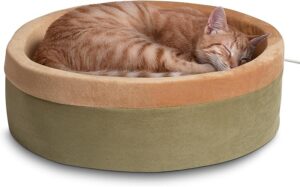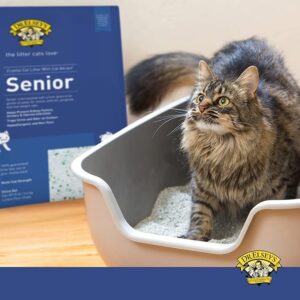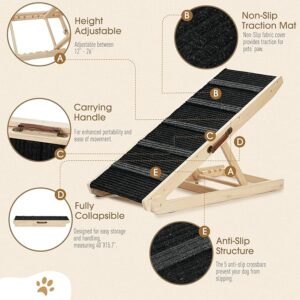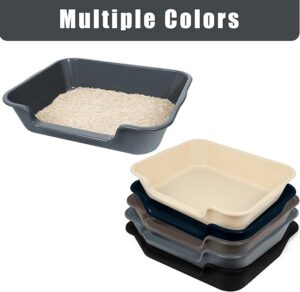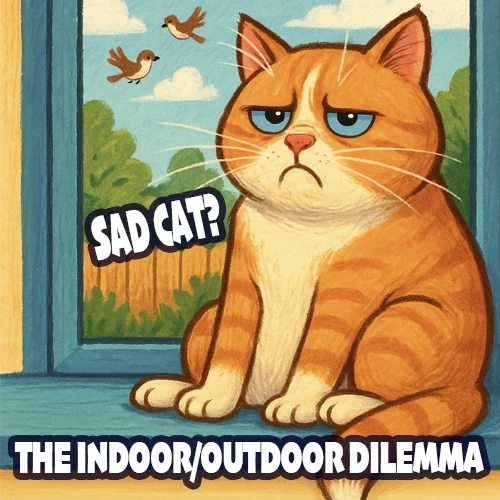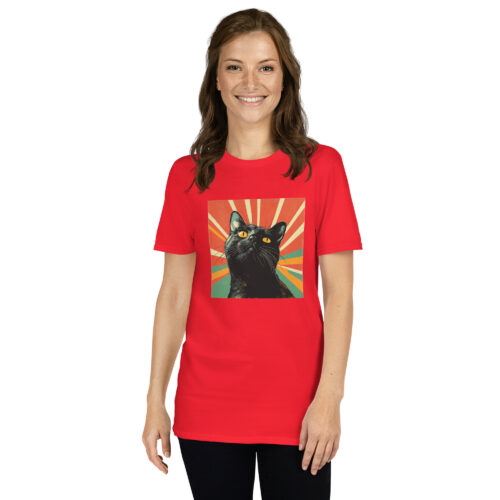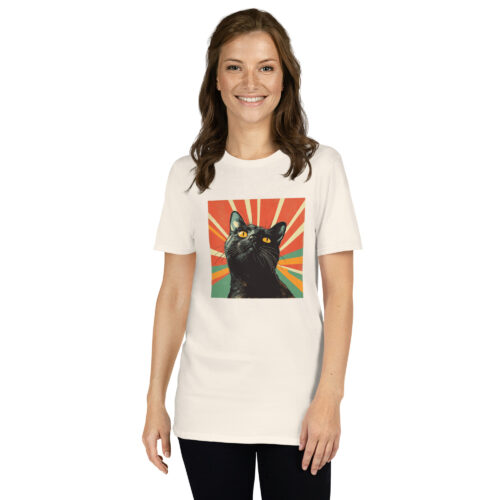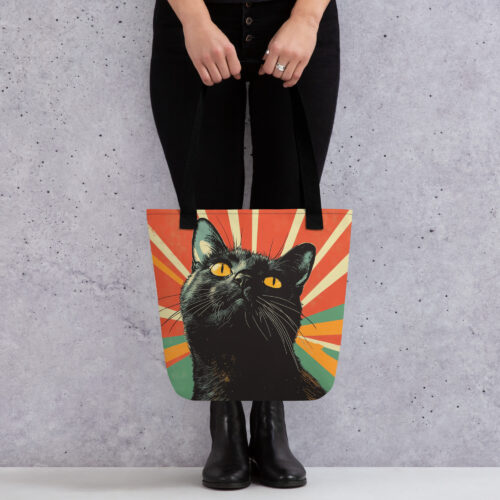
The Golden Years: Senior Cat Care Tips for Your Aging Feline
Table of Contents
Has your once spry kitten started to slow down a bit? Maybe they’re sleeping more than usual (even for a cat!), or that jump to the counter isn’t quite as effortless as it used to be. Just like us, our feline friends experience the effects of aging and if your kitty is approaching or past 10 years old, you’ve officially entered the “Senior cat care” parent club. Welcome! It’s a club filled with extra snuggles, deeper bonds, and yes, a few special considerations to keep your aging companion comfortable and happy.
My own tabby, Professor Whiskers, recently celebrated his 12th birthday. While he still has moments of kitten-like playfulness, I’ve noticed him becoming more selective about where he sleeps, how high he climbs, and even which toys capture his interest. These subtle changes prompted me to rethink our home setup and his care routine, and the transformation in his comfort and happiness has been remarkable.
Today, I’m sharing everything I’ve learned about creating a senior-friendly home for your golden-years kitty, from easy environmental tweaks to product recommendations that have made a world of difference for senior cats like the Professor. Because our aging felines deserve all the comfort and care we can provide, don’t they?
Understanding Senior Cat Care & Your Cat’s Changing Needs
The first step in creating an age-friendly home is understanding what’s happening with your cat’s aging body and mind. Around age 10-12 (sometimes earlier for some breeds), cats begin experiencing several changes:
- Reduced mobility and flexibility due to joint stiffness or arthritis
- Decreased vision or hearing that can cause disorientation
- More sensitive digestion requiring dietary adjustments
- Temperature sensitivity (especially feeling the cold more)
- Cognitive changes similar to dementia in humans
Each cat ages uniquely, but being aware of these potential changes helps you spot them early and adapt accordingly. During the Professor’s annual check-up last year, our vet mentioned that over 90% of cats over 12 show some signs of arthritis, though many owners miss these subtle signs, attributing them to “just getting older.”
Easy Home Modifications for Senior Cat Comfort
The good news? Creating a senior-friendly home doesn’t require a complete renovation or huge expense. Here are practical adjustments that make a significant difference:
Access Points Matter
Remember when your cat would leap effortlessly to the top of the bookshelf? Those days might be winding down, but that doesn’t mean they don’t want their favorite perches. Consider:
- Adding stepping stones to favorite high spots (small footstools, sturdy boxes, or dedicated cat stairs)
- Lowering essential resources like food, water, and favorite beds to easily accessible locations
- Creating ramps for key furniture they love (the sofa, your bed, window sills)
When Professor Whiskers started hesitating before jumping to our bay window, his favorite bird-watching spot for over a decade. I placed a small ottoman halfway up. Within minutes, he was back at his post, using the new “step” with a look that clearly said, “Thank you, human, but I totally could have made that jump if I wanted to.” Cat pride never ages!
Comfort Zones: Warmth, Support, and Accessibility
Senior cats need more comfort than their younger counterparts:
- Provide heating options for joints and general comfort (sunny spots, heated beds, warm blankets)
- Increase padding in sleeping areas with orthopedic or memory foam beds
- Create accessible retreats on each floor of your home so they don’t need to navigate stairs
Two months ago, I splurged on a self-warming cat bed with memory foam for Professor Whiskers, placing it in his favorite sunny corner. It’s now his primary napping spot, and I’ve noticed he seems more playful after resting there likely because his joints aren’t as stiff when warm and supported.
Litter Box Considerations
This isn’t the most glamorous topic, but it’s incredibly important. Senior cats may struggle with traditional litter boxes due to arthritis or mobility issues:
- Low entry points are crucial (boxes with at least one very low side)
- More litter boxes throughout the home reduces travel distance
- Larger boxes accommodate less precise movements
- Gentle, unscented litter is kinder to sensitive senior systems
I learned this lesson the hard way when Professor Whiskers had an “accident” near his box. The problem wasn’t behavioral, he simply couldn’t comfortably step over the high sides anymore. Switching to a low-entry box solved the problem immediately.
Cognitive Care: Keeping Their Minds Sharp
Just like humans, cats can experience cognitive decline with age. Signs include disorientation, changed sleep patterns, excessive vocalization, or forgetting learned behaviors like litter box use. Keep their minds active with:
- Gentle environmental enrichment with new textures, smells, and experiences
- Food puzzles adjusted for senior abilities (easier puzzles but still stimulating)
- Consistent routines that provide security and predictability
- Short, gentle play sessions adapted to their energy levels
Professor Whiskers has always been food-motivated, so I’ve switched from his younger-day complex food puzzles to simpler ones that still make him think but don’t require intense manipulation. His favorite is a treat ball with larger openings that dispenses senior dental treats when gently batted around.
Must-Have Products for Senior Cat Comfort
After trying countless products (some hits, some definite misses), here are five game-changers that have significantly improved quality of life for senior cats:
1. K&H Pet Products Thermo-Kitty Cat Bed
This plush, heated cat bed has been Professor Whiskers’ favorite upgrade. The gentle heating only activates when your cat is in the bed, warming to their natural body temperature to soothe achy joints. The orthopedic foam base provides crucial support for aging bodies, and the soft sides give a sense of security that senior cats appreciate.
What makes it special: The bed only warms to 102°F (your cat’s normal body temperature) and uses only 4 watts of electricity, making it safe for 24/7 use. Several cat parents in our community have reported their seniors sleeping more soundly and showing increased mobility after rest.
2. PetSafe CozyUp Pet Stairs
These lightweight but sturdy stairs have made all the difference in allowing the Professor to access his favorite window perch. With non-slip feet and carpet treads for secure climbing, they’re perfect for helping seniors reach beds, sofas, or window sills without dangerous jumping.
What makes it special: The incline is gentler than many other pet stairs, making it easier on arthritic joints. They’re also washable and can be easily moved from room to room as needed.
3. Dr. Elsey’s Senior Cat Litter
This unscented, fine-grain litter is specifically formulated for senior cats. The smaller particles are gentler on sensitive paws, and the excellent clumping makes cleaning easier (important since many senior cats urinate more frequently).
What makes it special: The herbal attractant helps guide seniors who might have memory issues back to their box, while the dust-free formula is easier on aging respiratory systems.
4. Adjustable Cat Ramp with Carpet
For serious mobility issues, this adjustable ramp has been a lifesaver for many senior cats in our community. It can be configured to various heights and features a carpet surface for better grip, helping seniors access beds or other furniture without jumping.
What makes it special: The adjustable height means you can start with a gentle incline and keep the same ramp as your cat’s needs change over time.
5. YingTutu Open Litter Pan with Rim
This simple but effective litter box features an ultra-low entry point while still containing litter well. The rim helps prevent over-the-edge accidents while allowing easy access for seniors with mobility issues.
What makes it special: The balance between accessibility and containment makes this perfect for seniors who struggle with traditional boxes but still have good litter habits.
Cat Age Chart
Cat Age to Human Age Chart
A more accurate way to understand your cat’s age in human years
| Cat Age (Years) | Human Age Equivalent | Life Stage |
|---|---|---|
| 1 | 15 | Young Adult |
| 2 | 24 | Adult |
| 4 | 32 | Adult |
| 6 | 40 | Mature Adult |
| 8 | 48 | Mature Adult |
| 10 | 56 | Senior |
| 12 | 64 | Senior |
| 14 | 72 | Geriatric |
| 16 | 80 | Geriatric |
| 18 | 88 | Geriatric |
| 20 | 96 | Geriatric |
Note: Cats enter their senior years around 10-12 (equivalent to humans in their mid-50s to 60s).
Recognizing Pain and Discomfort
One of the biggest challenges with senior cats is that they’re masters at hiding pain. After all, showing weakness in the wild would make them vulnerable. As responsible cat parents, we need to become detectives, looking for subtle signs:
- Decreased grooming or matted fur
- Changes in litter box habits
- Reluctance to jump or climb
- Irritability when touched in certain areas
- Sleeping more than usual
- Postural changes or stiffness when walking
The most heartbreaking realization I had with Professor Whiskers was understanding that his decreased play and interaction wasn’t just “getting old”, he was actually experiencing discomfort. After working with our vet on a joint supplement regimen, the change in his demeanor was remarkable. He didn’t become a kitten again, but his comfort and quality of life improved dramatically.
Important reminder: Always consult your veterinarian about any changes in behavior or routine. While aging is natural, pain and suffering shouldn’t be considered an inevitable part of getting older.
The Emotional Side of Senior Cat Care
There’s something truly special about caring for a senior cat. The relationship deepens in these golden years, a quiet understanding develops between you and your aging companion. They may not chase the laser pointer with the same abandon as before, but that gentle head-bump as you sit together speaks volumes about your bond.
Caring for Professor Whiskers in his senior years has taught me patience, empathy, and to appreciate the quiet moments. While I sometimes miss his wild kitten antics, our relationship has evolved into something more profound. He’s become more vocal (especially at 3 am!), more affectionate, and seems genuinely grateful for the accommodations that make his life easier.
Remember that these adaptations aren’t just about physical comfort, they’re about dignity. Our senior cats have given us years of companionship, entertainment, and unconditional love. Making these simple changes helps them navigate aging with grace and comfort.
Senior Cat Care Final Thoughts: Embracing the Golden Years
Creating a senior-friendly home isn’t complicated, but it does require attention and empathy. By making these relatively simple adjustments, you’re not just improving your cat’s physical comfort, you’re honoring the special relationship you’ve built over the years.
The gray whiskers, the slower pace, the extra naps, they’re all part of the beautiful journey of sharing your life with a cat through all their stages. And trust me, there’s something extraordinarily rewarding about seeing your senior cat contentedly snoozing in their heated bed or successfully navigating their new steps to a favorite perch.
What adjustments have you made for your senior kitty? Have you found products or solutions that have made a significant difference? Share your experiences in the comments below, your insights might help another cat parent whose feline friend is just entering their golden years.
Because every cat deserves to age with dignity, comfort, and all the love we can possibly give them. After all, they’ve spent years perfecting the art of wrapping us around their little paws, the least we can do is make their golden years as golden as possible!
Remember: While these adjustments can significantly improve your senior cat’s quality of life, they don’t replace proper veterinary care. Regular check-ups become even more important in the senior years, so partner with your vet to create a comprehensive care plan for your aging feline friend.
Loved this post? Explore more helpful cat care tips on our cat blog and join our community of cat lovers to share stories and advice!
Disclosure: This post contains affiliate links. If you purchase through these links, we may earn a commission at no extra cost to you.


